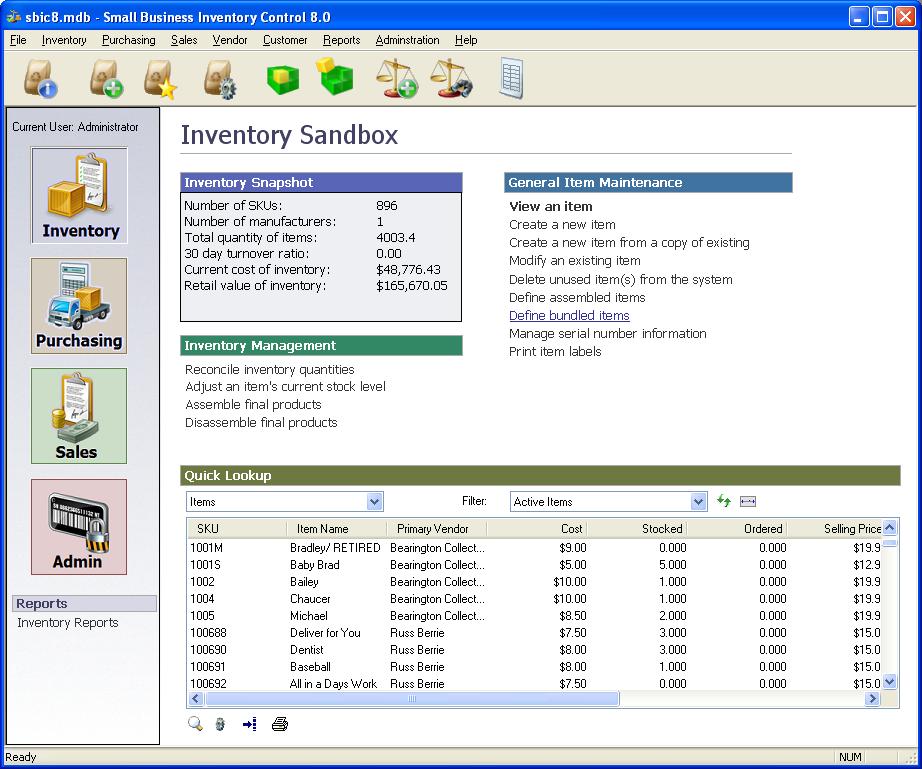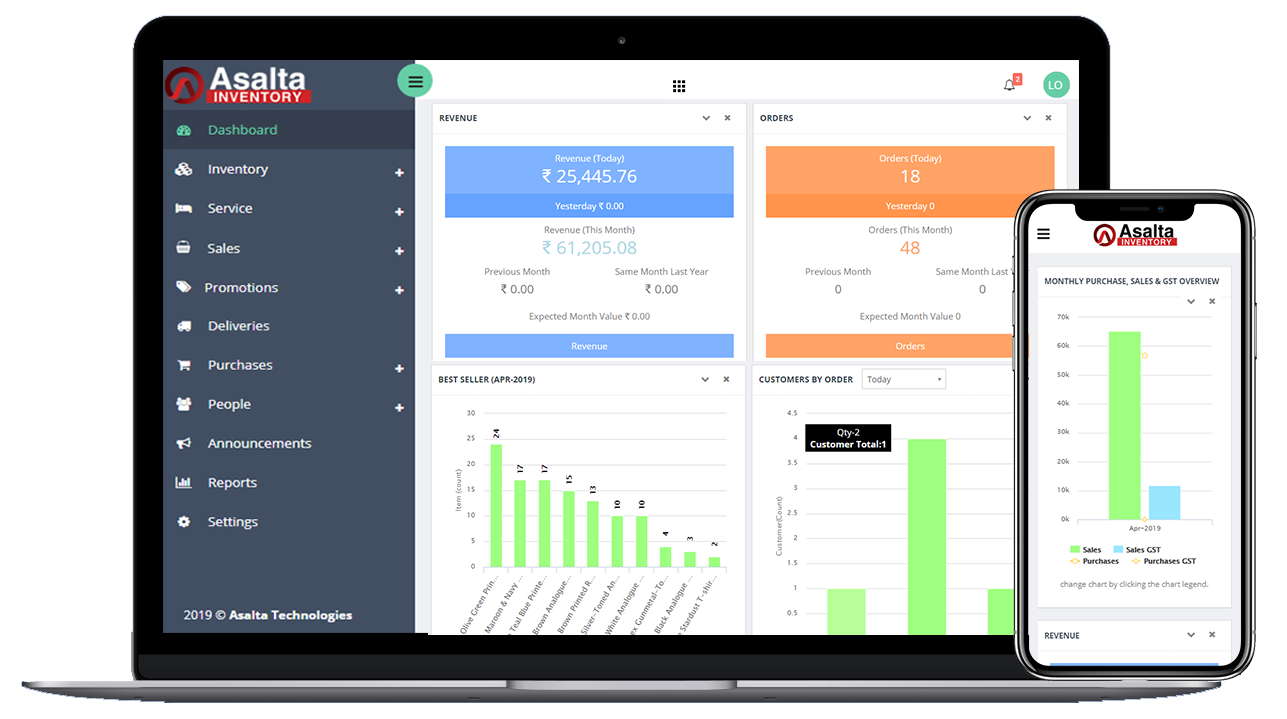Inventory small business software empowers small businesses to streamline their operations, enhance efficiency, and optimize inventory management. This comprehensive guide explores the core functions, key features, and implementation best practices of inventory management software, providing valuable insights for businesses seeking to improve their inventory management processes.
With the advent of cloud-based solutions and advanced features like real-time tracking and reporting, inventory management software has become an indispensable tool for businesses of all sizes. This guide will help you navigate the complexities of inventory management, enabling you to make informed decisions and select the software that best meets your specific business needs.
Inventory Management
Inventory management software is essential for small businesses to streamline their operations and improve their bottom line. This software can help businesses track their inventory levels, manage orders, and optimize their supply chain. By automating these tasks, inventory management software can save businesses time and money, and help them to avoid costly mistakes.
Core Functions of Inventory Management Software
- Tracking inventory levels
- Managing orders
- Optimizing the supply chain
- Generating reports
- Providing customer support
Benefits of Using Cloud-Based Inventory Management Software
- Accessibility from anywhere
- Scalability
- Security
- Cost-effectiveness
Features to Consider

When selecting inventory management software, consider the following key features:
Real-time Inventory Tracking
Real-time inventory tracking provides up-to-date information on stock levels, ensuring accurate inventory counts and preventing overstocking or stockouts.
Barcode Scanning
Barcode scanning automates inventory management, reducing errors and increasing efficiency in receiving, picking, and shipping operations.
Reporting Capabilities
Robust reporting capabilities provide insights into inventory performance, including stock turnover, sales trends, and reorder points, enabling data-driven decision-making.
Integration with Other Business Systems
Integration with other business systems, such as accounting, e-commerce platforms, and CRM, streamlines operations and improves data accuracy.
Implementation and Best Practices

Implementing inventory management software and adhering to best practices can streamline your operations, reduce costs, and enhance customer satisfaction. Here’s a guide to help you get started.
Step-by-Step Implementation
- Assess your needs:Determine the specific requirements of your business, including the types of inventory, volume, and desired functionality.
- Research and select software:Explore different software options, considering features, cost, ease of use, and vendor support.
- Set up the system:Configure the software according to your business processes, including item creation, location management, and inventory tracking.
- Train your team:Provide comprehensive training to ensure staff understand the software and can use it effectively.
- Monitor and adjust:Regularly review inventory data and make adjustments as needed to optimize stock levels and prevent shortages.
Best Practices for Accuracy, Inventory small business software
Maintaining accurate inventory records is crucial. Here are some best practices:
- Regular inventory counts:Conduct physical inventory counts at regular intervals to verify the accuracy of the system.
- Cycle counting:Perform frequent, partial counts of specific items to identify discrepancies and improve accuracy.
- Use barcode scanning:Implement barcode scanning technology to reduce manual data entry errors and speed up inventory processes.
- Train staff on inventory handling:Educate staff on proper inventory handling procedures to minimize damage and loss.
- Establish clear inventory policies:Develop and communicate clear policies regarding inventory management, including receiving, storage, and issuing procedures.
Optimizing Stock Levels
Optimizing stock levels is essential for minimizing costs and improving customer service.
- Use inventory reports:Analyze inventory reports to identify trends, slow-moving items, and potential shortages.
- Set minimum and maximum stock levels:Establish appropriate stock levels based on demand, lead times, and storage capacity.
- Implement a safety stock:Maintain a buffer stock to cover unexpected fluctuations in demand or supply chain disruptions.
- Use inventory forecasting:Utilize forecasting techniques to predict future demand and adjust stock levels accordingly.
- Collaborate with suppliers:Establish strong relationships with suppliers to ensure timely delivery and avoid stockouts.
Cost and Value

Inventory management software can vary significantly in terms of pricing, depending on the features and functionality offered. Some solutions are available as a one-time purchase, while others require a monthly or annual subscription. It’s important to consider the total cost of ownership, including the purchase price, ongoing maintenance and support costs, and any additional fees.
Investing in inventory management software can yield a substantial return on investment (ROI) for businesses. By optimizing inventory levels, reducing waste, and improving efficiency, businesses can save money and increase profitability. The ROI will vary depending on the specific software solution implemented and the size and complexity of the business.
Factors to Consider When Evaluating Cost-Effectiveness
- Features and functionality:Ensure the software meets the specific needs of the business, including the number of users, inventory volume, and desired features.
- Scalability:Consider the potential for growth and ensure the software can accommodate future expansion.
- Integration:Determine if the software integrates with other business systems, such as accounting or CRM software.
- Support and maintenance:Evaluate the level of support and maintenance offered by the vendor, including response times and availability.
- Total cost of ownership:Consider the upfront purchase price, ongoing subscription costs, and any additional fees.
Industry-Specific Considerations: Inventory Small Business Software
Different industries encounter unique inventory management challenges. Tailoring software selection and best practices to industry-specific needs is crucial for effective inventory management.
Here are some key considerations for different industries:
Retail
- High volume and turnover:Retail businesses manage a vast number of SKUs with frequent inventory turnover. They require software that can handle large volumes and track inventory levels in real-time.
- Seasonality:Retail inventory varies significantly throughout the year. Software should enable effective forecasting and planning to manage seasonal fluctuations.
- Customer expectations:Customers expect high product availability and fast delivery. Software should support omnichannel inventory management and provide visibility across all channels.
Manufacturing
- Complex supply chains:Manufacturing involves intricate supply chains with multiple suppliers and production stages. Software should enable visibility and coordination throughout the chain.
- Work-in-progress (WIP) tracking:Manufacturing businesses need to track WIP inventory accurately to monitor production progress and identify bottlenecks.
- Quality control:Inventory management software should integrate with quality control systems to ensure compliance and product traceability.
Healthcare
- Critical inventory:Healthcare facilities manage life-saving medical supplies and pharmaceuticals that require strict inventory control and compliance.
- Expiry tracking:Software should track expiry dates and alert users when inventory is nearing expiration to prevent wastage and ensure patient safety.
- Regulatory compliance:Healthcare inventory management must adhere to industry regulations and standards, such as HIPAA and FDA guidelines.
Ultimate Conclusion

In conclusion, inventory small business software is a powerful tool that can transform the way businesses manage their inventory. By leveraging the features and best practices Artikeld in this guide, small businesses can streamline their operations, reduce costs, and gain a competitive edge in today’s dynamic market.
Embracing inventory management software is a strategic investment that can drive growth, efficiency, and profitability.
Commonly Asked Questions
What are the key benefits of using inventory small business software?
Inventory small business software offers numerous benefits, including real-time inventory tracking, improved accuracy, reduced costs, streamlined operations, and enhanced customer satisfaction.
How do I choose the right inventory small business software for my business?
Consider your business’s specific needs, such as industry, inventory volume, and budget. Evaluate different software options based on features, pricing, and customer reviews.
What are the best practices for implementing inventory small business software?
Follow a step-by-step implementation plan, train staff thoroughly, ensure data accuracy, and conduct regular audits to maintain optimal inventory management.